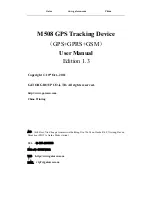
[
I
TESTING TUNNEL DIODES
Tunnel diodes are small p-n junction semicon
ductors with a negative resistance or "tunnel" re
gion. The "tunnel" region makes it possible to use
the diode as an amplifier, oscillator, or pulse gen
erator. The diode conducts very easily in one direc
tion (at much lower voltage than conventional signal
diodes) but the tunnel region is in the direction of
higher resistance. Tunnel diodes are normally op
erated at very low voltage and current levels.
The characteristics of tunnel diodes may be meas
ured with the curve tracer. Connect 1he diode be
tween the emitter and collector pins of one of the
sockets. The tunnel diode is connected with the
cathode to the emitter jack a_nd the anode to the
collector jack. set the POLARITY switch to NPN.
If the cathode cannot be readily identified, try both
positions of the POLARITY switch when the other
controls have been properly set for the test. Calibrate
the oscilloscope horizontal amplifier for high sensi
tivity such as 0.1 volt per division. It may be neces
sary to use XS magnification or h?rizont<:11 seal�
expansion on the oscilloscope to achieve this sensi
tivity. Set the SWEEP VOLTAGE control to a !ow
value, so it will just sweep through the tunnel region.
Set the VERTICAL SENSITIVITY as required for
the largest possible on-scale display. A display
similar to that shown in Figure 37 should be pre
sented on the oscilloscope.
Several characteristics of the tunnel diode can be
measured directly from the display. Note: A trace
will normally not be displayed in the negative re
sistance region .
.,.__vv-•
I
I
-1 Vp t.-
I
I
I
I
10!
......
I
..... ... ... ........
1
i I i
1.L
.......
..: .....
1.
...
:....
:
:
..
1
....
/ ....
I
1
I)
..
5,......... . ....
;
... .........
,
..
,
I
i
:
I
... , ... :
.. ,:. .... 1
5
,
..
.
..............
.J
MA
.
I
I
l
l
...
,:
.......... :
:
:
:
:
:
:
......
,:
.....
·
Ip -peak current, start of tunnel region
Iv -valley current. end of tunnel region
Vp-peak voltage, start of tunnel region
Vv-valley voltage, end of tunnel region
The average negative resistance can be calcu
lated from these measurements:
V,-V
1)
Average negative resistance
=
1 1
J)-\'
Tunnel rectifiers have most of the same general
characteristics as tunnel diodes, but do not use the
negative resistance characteristic in their operation.
The region which tends to tunnel is more resistive in
tunnel rectifiers and peak current is not as pro
nounced. Because of this characteristic, a high front
to-back resistance ratio at low voltages allows the
semiconductor to be used as a very low signal volt
age rectifier. It conducts very easily in one direc
tion with very little voltage drop (actually the oppo
site direction from conventional diodes insofar as the
N and P material is concerned, thus the devices are
sometimes called back diodes). The reverse direc
tion (direction which tends to tunnel) is resistive at
low voltage values, but conducts readily at voltage
which approximates the forward drop of a conven
tional diode. Therefore, the peak voltage of the sig
nal to be rectified should not exceed the resistive
region. The curves should be displ
ay
ed as described
for tunnel diodes. Tests using both polarities of
sweep voltage are required to examine the forward
vs reverse conduction characteristic. Examination of
the reverse direction conduction curve reveals the
peak voltage that may be used without exceeding
the resistive region.
+
!
'2
!
'
'
'
.... ,F
1
,
;-+ ·
4,,:
·;
....
,:
tr
1.,,.:., TUNNEL
.
OR NEG ATIVE
RESISTANCE REGION
...........
6
�
\
:(NO TRACE)
Ip
(\
.... ·
......
l _
!
=
-1.:Ll::�'.� ····••••••·••···················
0.2
o.4 V o.6
o,8
1.0
A
.. 0
0.8
0.6
Figure 37. Tunnel Diode Characteristic Curves
V
8
0.4
().2
.:;
i10
29






































